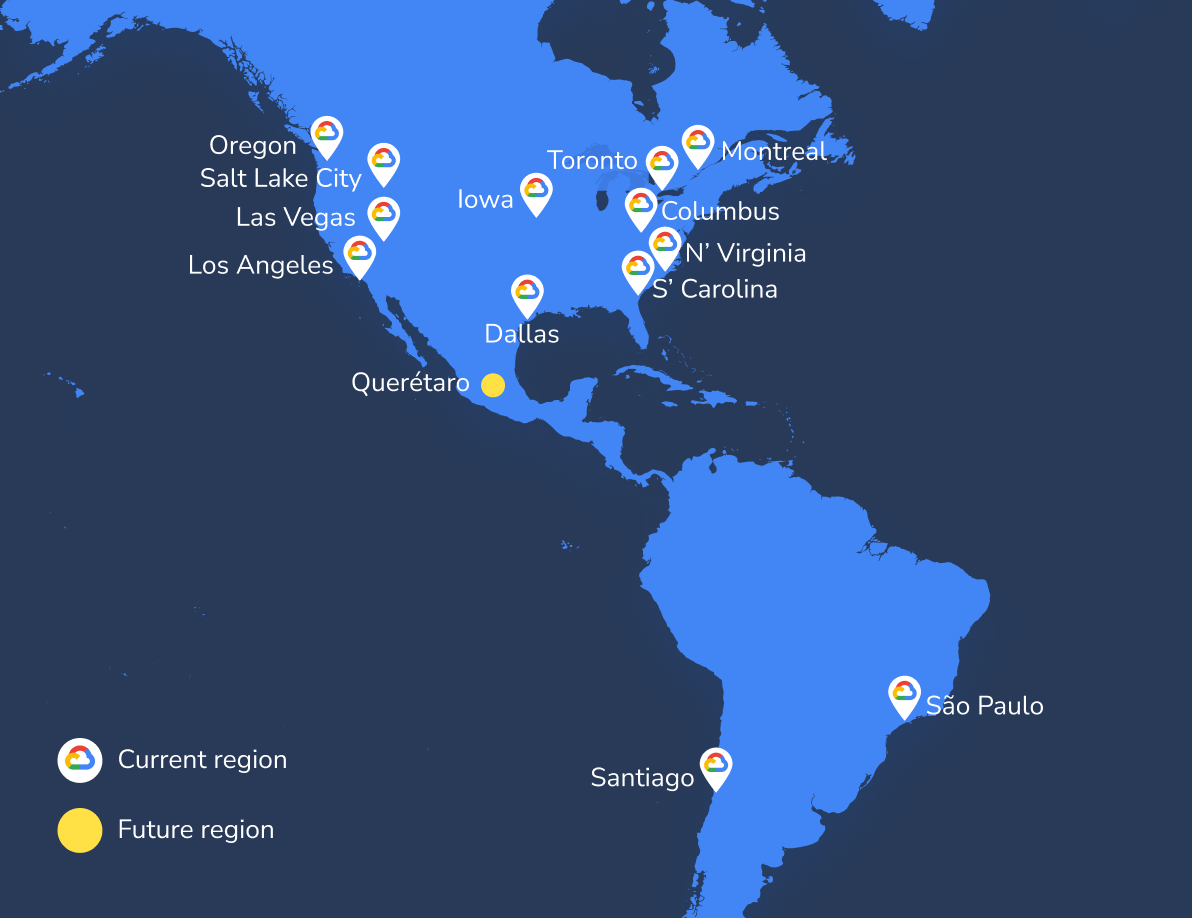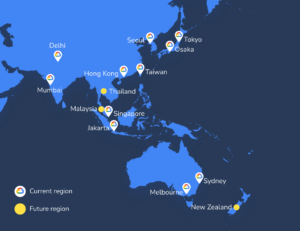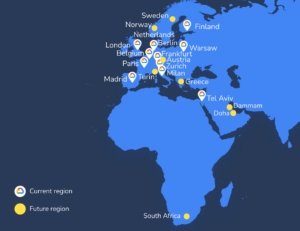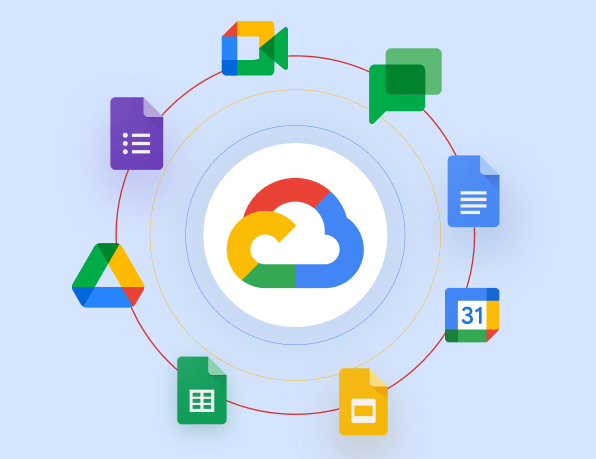It’s no secret that Google is all-in on education. Their focus and innovation in the educational space around the world are famous, even revolutionary.
Through tools like Google Classroom, Google Forms, Google Meet and many more, Google has created an immense impact within not only the world of education, but within EdTech the world over.
However, slightly lesser known than the traditional Google tools available through Google Workspace for Education, is the infrastructure allowing these tools to perform as well as they do.
The short answer is through Google Cloud.
The more indepth answer can be found in this article, where I’ll discuss Google Cloud, what Google Cloud Regions are and the impact Google has on educational environments and what that means for your digital learning environments.

What is the significance of Google Cloud for the Education sector?
Google Cloud is a cloud computing platform that offers a wide range of services and tools for developers and organisations to build, deploy, and manage applications and services in a secure and scalable way.
One of the key features of Google Cloud is its ability to operate in multiple regions around the world. This is where Google Cloud Regions become significant, and their implications and benefits have on those regions, especially in education.
So, what are Google Cloud Regions?
Google Cloud Regions are physical locations where Google Cloud services are available, that is, their servers are physically located.
Each region consists of one or more data centres that are strategically located in different parts of the world. Currently, Google Cloud offers 35 regions and over 106 zones worldwide.
Each region is a separate geographic area and has its own set of resources and infrastructure availability and challenges. Resources such as computing power, storage, and network connectivity. These resources are managed by Google Cloud, and customers may access and utilise them when creating applications in that specific region.

Implications of Google Cloud Regions for Education
-
Latency and Network Performance
One of the most significant implications of Google Cloud Regions for education is the impact on latency and network performance. The location of the user, the location of the cloud resources, and the distance between them can all affect the latency and performance of applications and services.
For example, if a student is accessing a cloud-based learning management system that is hosted in a different region, it can result in slower loading times and decreased performance. To mitigate this, Google Cloud Regions allow education institutions to choose the region that is closest to their users to minimise latency and improve network performance.As a result, Google Cloud regions are strategically located around the world in order to boost performance to not only the country they are located in, but countries in the surrounding region.
-
Data Residency and Compliance
Another important implication of Google Cloud Regions for education is data residency and compliance. Many countries and regions have data sovereignty laws that require organisations to store and process data within the country or region where it was collected.
With Google Cloud Regions, educational institutions can choose to store their data in a specific region to comply with these laws and regulations. This ensures that sensitive data, such as student information and other forms of private data, are protected and adhere to the specific compliance requirements of that region or country.
-
Disaster Recovery and continuity planning
Google Cloud Regions also provide benefits for disaster recovery and continuity planning. By deploying resources in multiple regions, education institutions can ensure that their applications and services remain available in the event of a disaster, such as a natural disaster or a cyber attack.
In addition, Google Cloud Regions provide options for backup and replication of data across regions, allowing education institutions to quickly recover their data and resume operations in the event of an outage or failure.
-
Cost Optimization
Another implication of Google Cloud Regions for education is cost optimization. By choosing the region that is closest to their users, educational institutions can minimise the cost of data transfer and network charges.
In addition, Google Cloud offers pricing discounts for resources deployed in specific regions, such as the “europe-west” and “asia-southeast” regions. These discounts can help education institutions reduce their cloud infrastructure costs and allocate more resources to their core mission of teaching and learning.
Benefits of Google Cloud Regions for Education
-
Scalability and Flexibility
One of the key benefits of Google Cloud Regions for education is scalability and flexibility. Education institutions can easily spin up new resources and scale their infrastructure to meet the changing demands of their students and faculty.
For example, during peak registration periods or exam times, educational institutions can quickly add more computing power and storage capacity to support increased usage. This flexibility allows educational institutions to provide a seamless and consistent user experience, regardless of the demand.
-
Global Reach
Google Cloud Regions also offer education institutions a global reach. With 26 regions and over 100 zones worldwide, education institutions can easily deploy resources in different regions to serve their students and faculty around the world
This global reach can be particularly important for distance learning programs. The global reach of Google Cloud Regions can be particularly valuable for education institutions that have a diverse student population or that engage in collaborations with other education institutions or organisations around the world. By deploying resources in different regions, education institutions can ensure that their applications and services are accessible to students and faculty regardless of their location, and running effectively and efficiently.
For example, a school group with campuses in the United States and Europe can deploy resources in the “us-west” and “europe-west” regions to ensure that their applications and services are easily accessible to students and faculty in both regions. This will improve the student experience and enable seamless collaboration across different campuses and regions.
-
Security and Compliance
Google Cloud Regions also offer education institutions enhanced security and compliance features. Google Cloud’s security model is built on a layered approach that includes physical, operational, and software security measures to protect customer data and infrastructure.
In addition, Google Cloud Regions comply with a wide range of industry standards and regulations, such as ISO 27001, SOC 2, HIPAA, and GDPR. This can help education institutions meet their own compliance requirements and ensure that their data and infrastructure are secure.
-
Innovation and Collaboration
Finally, Google Cloud Regions can foster innovation and collaboration in education. By providing access to a wide range of cloud services and tools, Google Cloud can help education institutions build and deploy new applications and services that can enhance their students’ learning experience.
As well as a resource base for the students themselves to utilise and develop projects, tools, and services.
In addition, Google Cloud provides collaboration tools, such as Google Workspace and Google Meet, that can facilitate communication and collaboration between students and faculty. This can help create a more engaging and interactive learning experience, regardless of the location of the participants.
Importance of Google Cloud in Education
As you can tell, Google Cloud Regions offer a wide range of benefits and implications for educational institutions. From improved latency and network performance to enhanced security and compliance, Google Cloud Regions can help education institutions meet their cloud infrastructure needs and provide a seamless and secure learning experience to their students and faculty.
Benefits to your Core Educational Toolset
This improved latency and performance have a significant and positive impact on learning experiences within classrooms and beyond.
Classrooms that utilise Google Workspace for Education and all the tools and features offered by Workspace function at a higher rate when within proximity of Google Cloud Regions.
The localisation of data centres and have far reaching implications and benefits for digital learning environments with Google Workspace for Education tools. By choosing the region that is closest to their users and complying with data residency laws and regulations, education institutions can ensure that their data and infrastructure are protected and meet compliance requirements.
In addition, by leveraging the scalability, flexibility, and innovation of Google Cloud, education institutions can enhance the student experience and lesson fluidity.
Onwards
Michael Rosenthal
Team Mobile Guardian






